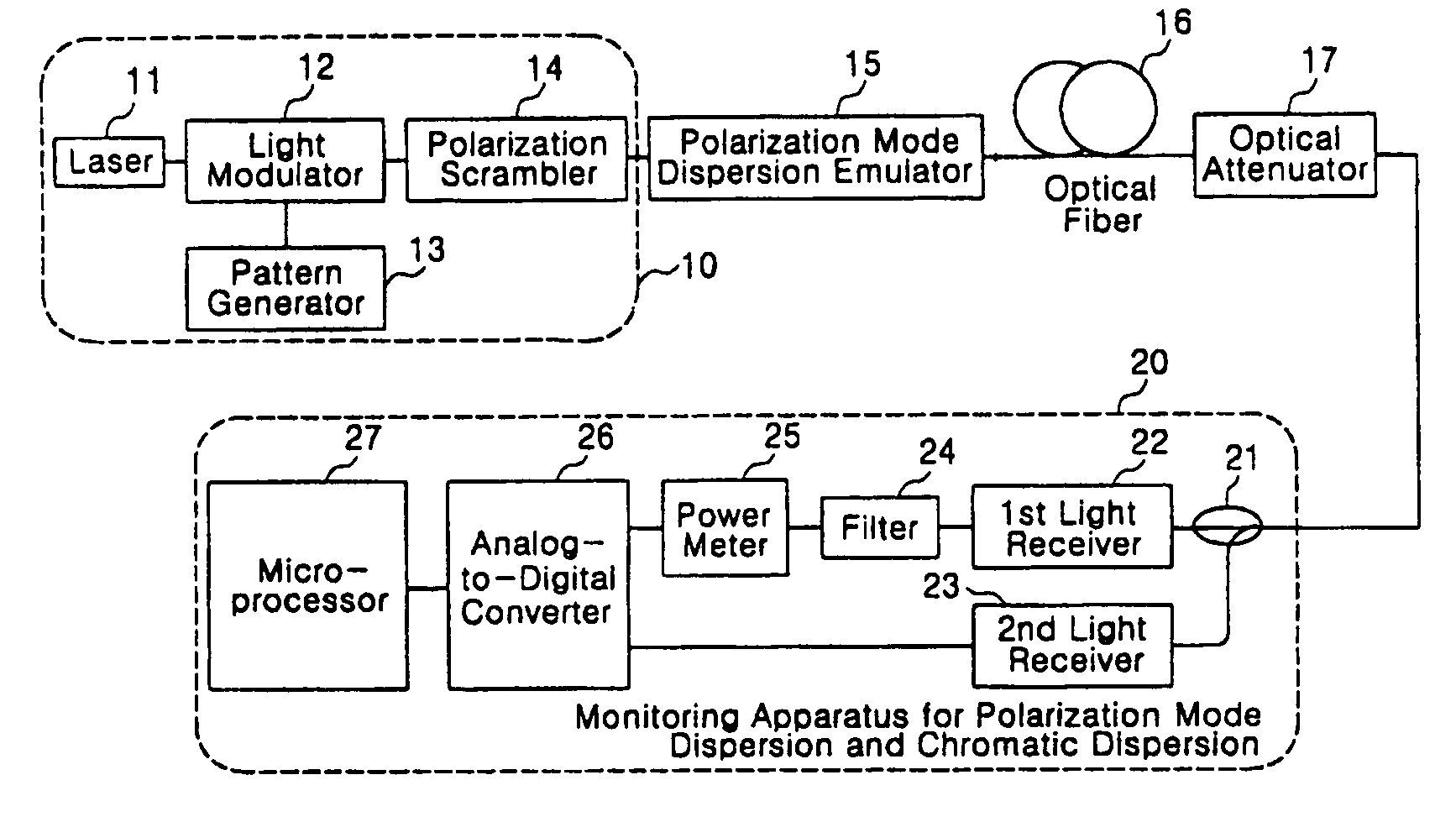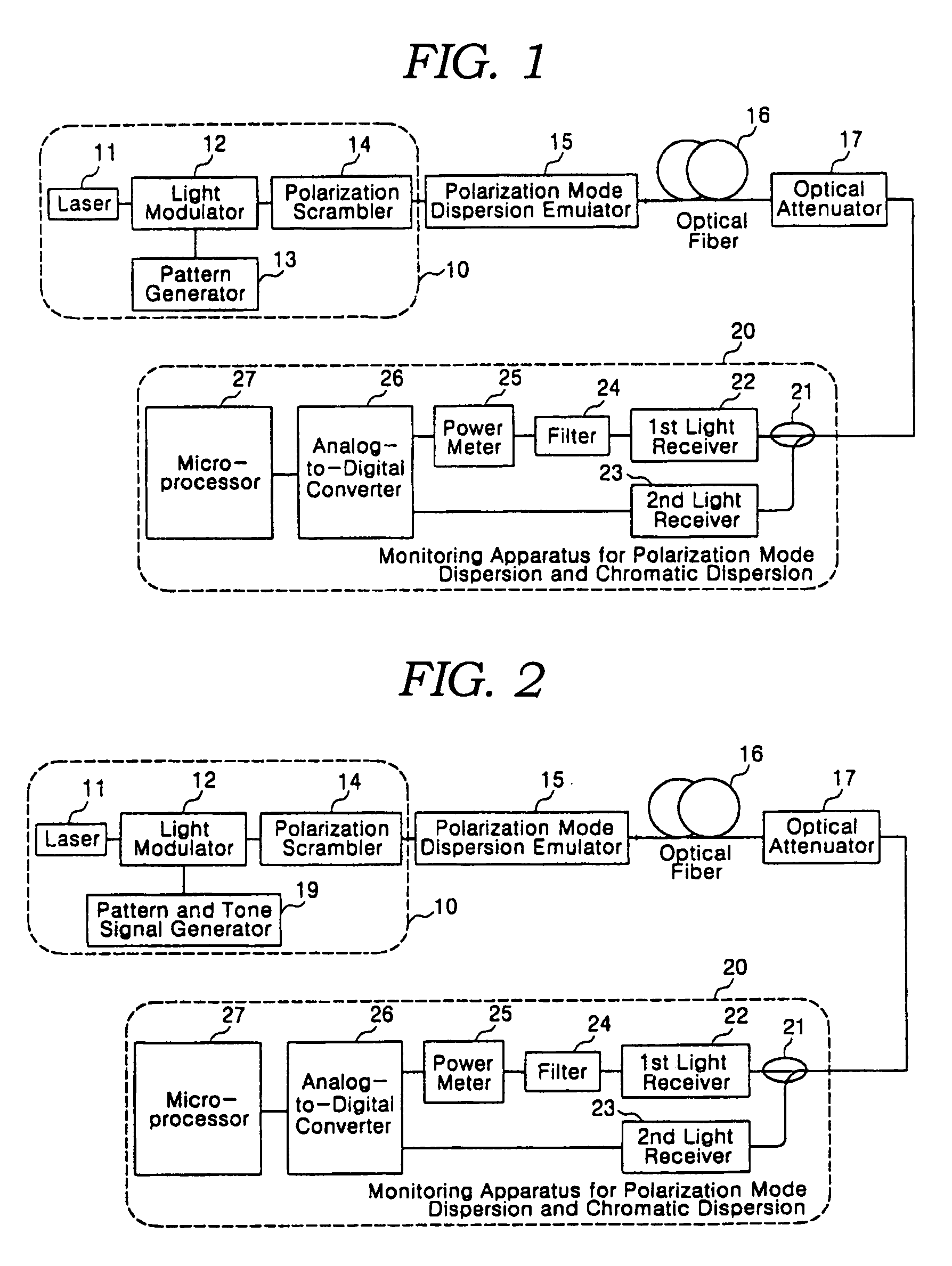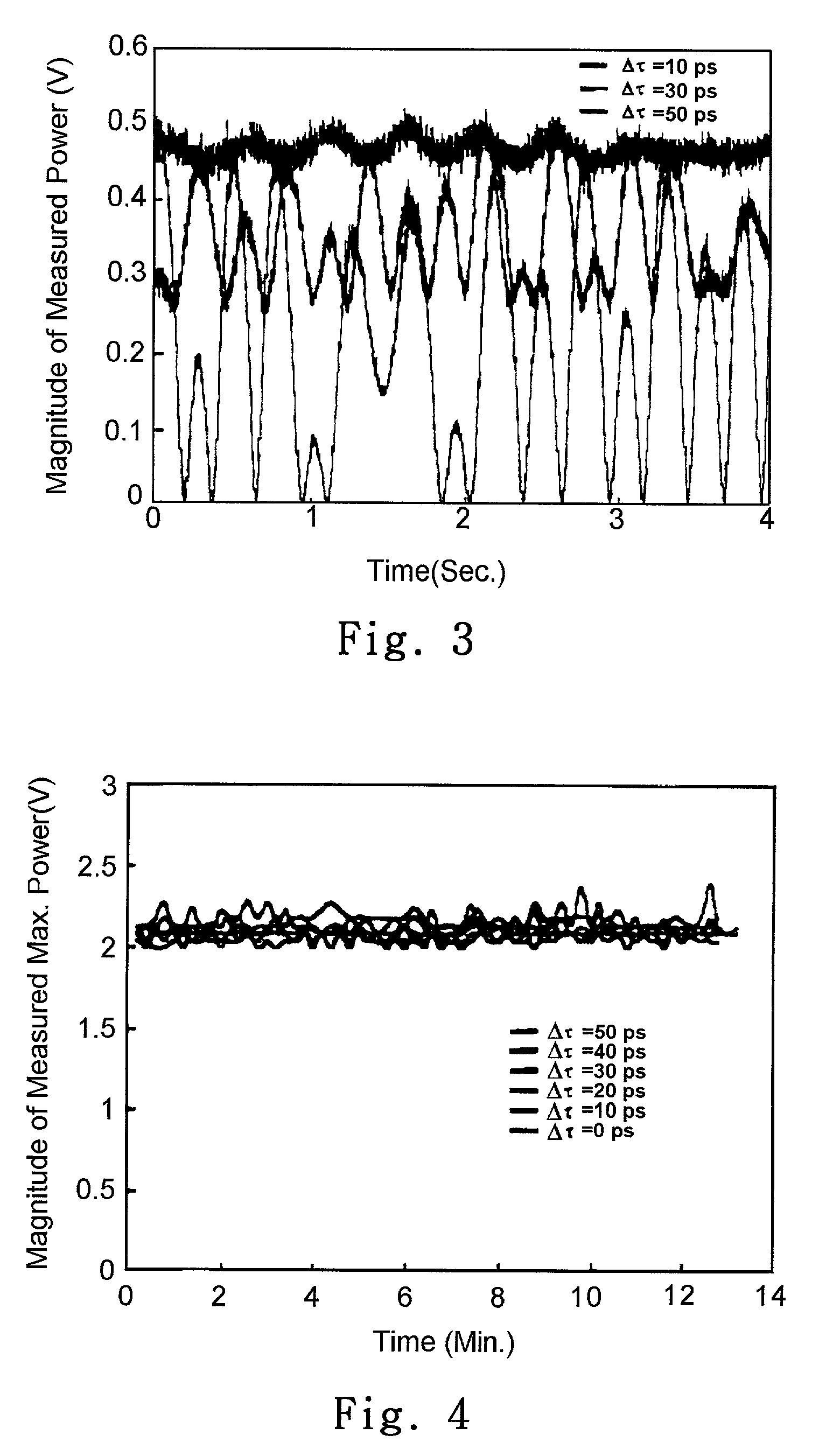Apparatus for monitoring polarization-mode dispersion and chromatic dispersion and transmitting means for transmitting optical signal in optical network
a technology of optical network and optical signal, applied in the direction of transmission, transmission monitoring, electromagnetic transmission, etc., can solve the problems of affecting the quality of optical signals, aggravate transmission quality, and polarization-mode dispersion and chromatic dispersion are ever becoming serious problems
- Summary
- Abstract
- Description
- Claims
- Application Information
AI Technical Summary
Benefits of technology
Problems solved by technology
Method used
Image
Examples
Embodiment Construction
[0020]Hereinafter, the present invention is described in detail through preferred embodiments by referring to the accompanying drawings.
[0021]FIG. 1 is a diagram illustrating the configuration of a monitoring apparatus in accordance with the present invention and illustrates generally how the apparatus is constituted to monitor optical signals for their polarization-mode dispersion and chromatic dispersion.
[0022]The constitution of FIG. 1 is composed, in a broad sense, of a transmitting means (10) for transmitting data in the form of optical signals through an optical fiber and a monitoring device (20) for monitoring the optical signals for their polarization-mode dispersion and chromatic dispersion after photoelectric conversion thereof.
[0023]The transmitting means (10) in the present invention is similar in its function to that in the prior art, but further comprise a polarization scrambler (14) adopting the polarization scrambling technique that allows the transmitting optical si...
PUM
 Login to View More
Login to View More Abstract
Description
Claims
Application Information
 Login to View More
Login to View More - R&D
- Intellectual Property
- Life Sciences
- Materials
- Tech Scout
- Unparalleled Data Quality
- Higher Quality Content
- 60% Fewer Hallucinations
Browse by: Latest US Patents, China's latest patents, Technical Efficacy Thesaurus, Application Domain, Technology Topic, Popular Technical Reports.
© 2025 PatSnap. All rights reserved.Legal|Privacy policy|Modern Slavery Act Transparency Statement|Sitemap|About US| Contact US: help@patsnap.com



